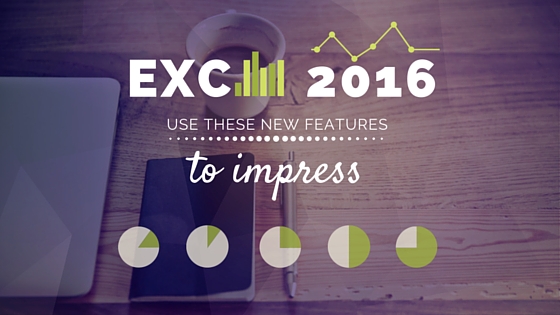Microsoft Excel 2016: Use These 5 New Features To Impress Your Team
Microsoft’s 2016 edition release of its Office application suite is set to mark a new era in providing corporate clients with exceptional business process flexibility, team collaboration initiatives, and higher integration with other applications.
The new release is geared towards eliminating many of the inconsistencies and performance issues that users faced with the 2013 edition. Microsoft Excel, for instance, in the previous edition had been the cause of many complaints pertaining to slow opening, freezing of application, and a few others. More importantly, applications for business use were also limited which meant that introducing new features and capabilities was long overdue.
The Excel 2016 serves to be a major improvement with the introduction of new tools and ways of representing data in a fast and effective manner. So if you are curious to know what these new changes are, here are 5 new features you should know about.
1) Six new chart types
We can all testify to how mundane charts are for data visualization purposes. Business presentations often involve exhibiting financial results of quarter sales, investment returns, and annual market share summaries. But thanks to Microsoft, the Excel 2016 brings six new chart types useful for detailing hierarchical or financial information. The chart types provide extensive formatting options for representing statistical data.
To use these chart options, simply go to the Insert tab and click on the Insert Hierarchy Chart to use the Sunburst or Treemap chart. Then click Insert Statistical Chart to select Pareto, Histogram, or Box and Whisker, or alternatively, click Insert Waterfall or Stock Chart for Waterfall:

You can also click on Recommended Charts and then go on All Charts to view all new charts.

2) One click forecasting
Forecasting options had been a feature in previous Excel editions, but only in the form of linear forecasting. In the 2016 edition, on the other hand, the function had been extended to allow firms to forecast on exponential smoothing requirements, such as FORECAST.ETS(), in a one button forecasting click feature.
To use the feature, click on the Forecast Sheet button on the Data tab to generate a forecast data representation for your data series. You can then using the wizard to find a number of options to configure your forecast paramaters, such as seasonality, which Excel automatically identifies through default and confidence intervals.

This feature will prove to be immensely relevant for forecasting sales revenues and demand for units and have considerable use for purchase, finance, and marketing departments.
3) Get and Transform
Making effective business decisions requires doing a great deal of analysis. However, before that can happen, the relevant data must be extracted from the sea of information and consolidating it in one piece for easy accessibility. The Excel 2016 has brought just the feature to allow organizations to do this. The ‘Get and Transform’ functionality allows them to quickly gather and transform all relevant data in one piece.
To use the Get and Transform functionality, click on the Data tab and click on Show Queries and then on From Database for a list of the different types of databases.

4) 3D Maps
The Power Map, also known as 3D Maps, has been introduced as a data visualization feature for Excel to provide comprehensive data discoveries and insights that organization might not have access to in 2D charts and tables. 3D Maps allows users to analyze 3D data of information visualized on geographical plots.

Users first have to plot geographic data on a 3D pane on a custom map, and over time see visual data that can easily be shared with others. This has significant use for traffic congestions, retail space footfall analysis, and census data.
To use 3D Maps, go on the Insert tab on the Excel ribbon and select 3D Maps. Tours can be found below the 3D Maps icon.

5) Pivot Table improvements
Excel’s PivotTable offers an incredible array of options for analyzing business data. Both editions of Excel 2010 and 2013 introduced key improvements, such as Power Pivot and Data Model, allowing users to build sophisticated data for your data. However, the release of Excel 2016 comes with plenty of more tools and options for an immersive experience.
These include:
- Automatic detection of table relationships
- Greater formatting options for custom measures
- Automatic time classification functionality
- PivotTable search bar for quick navigation purposes
- PivotChart drill-down options




